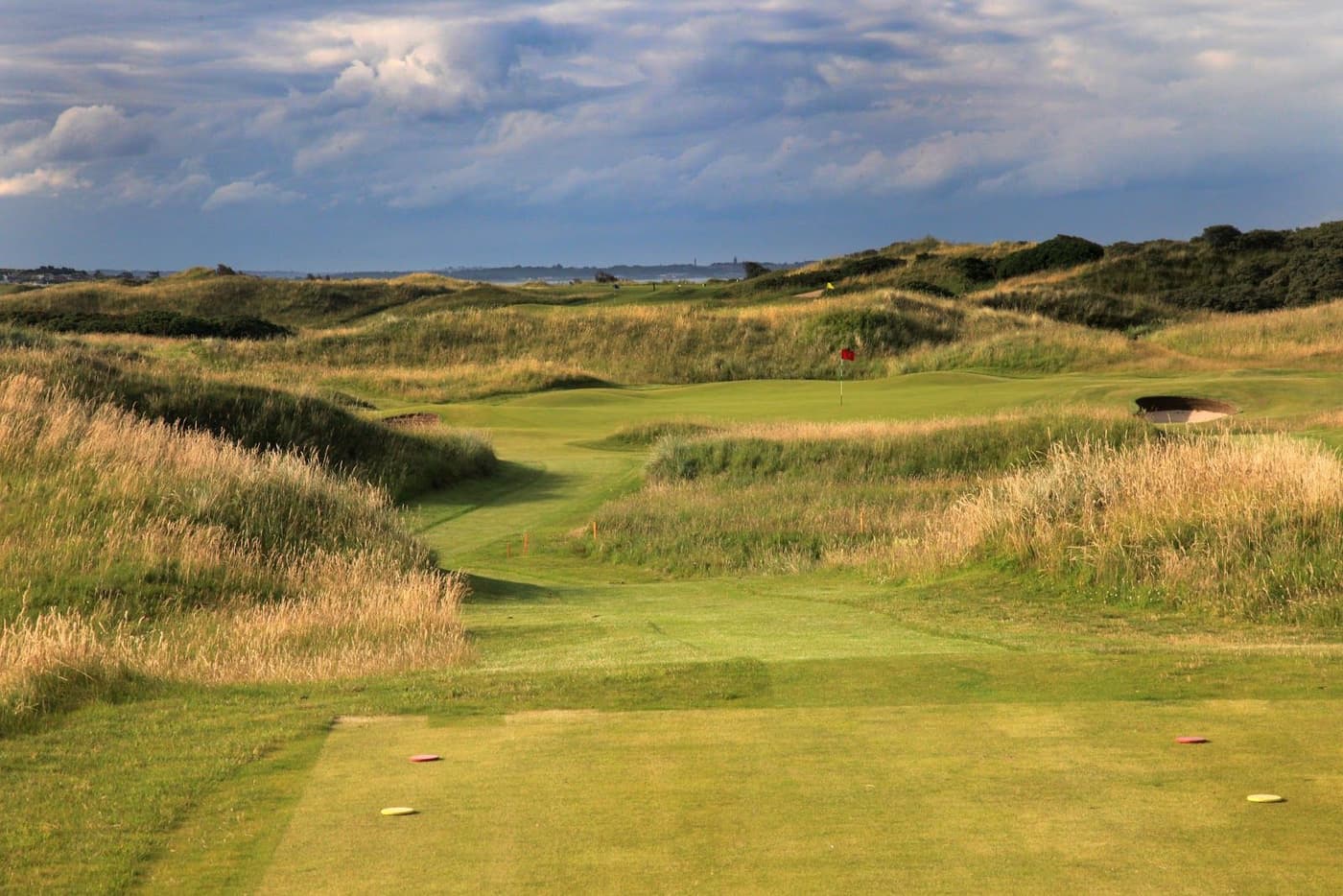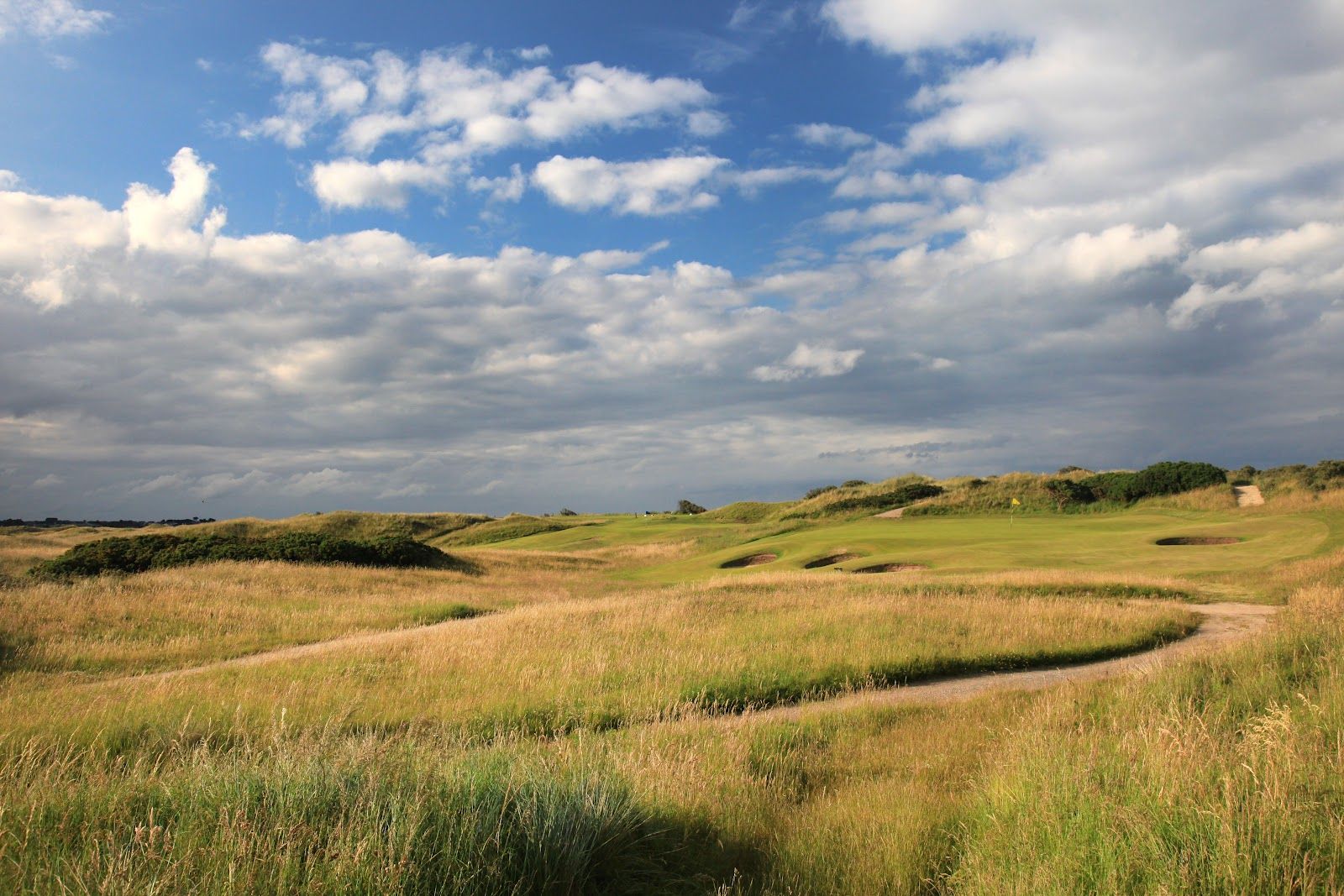- AddressGolf Links Rd, Portmarnock, Co. Dublin, D13 KD96, Ireland
- Championships hosted
Portmarnock Golf Club is situated on its own sandy peninsula, approximately two miles long and covering some 500 acres. In 1893, William Pickeman, a Scottish insurance broker, and his friend George Ross, rowed across the sea from Sutton to the peninsular and immediately realised that this was prime golfing terrain. In those days, the peninsula could only be safely reached by boat.
The land belonged to the famous distiller, John Jameson, and from around 1850, the links was used as the Jameson’s private golf course. Nine “proper” holes opened for play in 1894, Scotsman Mungo Park (winner of the 1874 Open Championship at Musselburgh Old course) directed the course design and became Portmarnock’s first professional. Two years later another Scot, George Coburn, extended the course to eighteen holes. Pickeman was the driving force behind Portmarnock’s beginnings and went on to design other courses in Ireland.
There is nothing man-made about Portmarnock; it’s a natural links, and considered to be a very fair golf course. With water on three sides, the course is at the mercy of the wind. Laid out broadly in two loops of nine holes, you are invariably playing in different directions. Measuring just less than 7,500 yards from the back tees, it is a formidable test of golf. You will need your very best putting game because the greens at Portmarnock are lightning fast and true. Or in the words of Bernard Darwin: “Perhaps the outstanding beauty of Portmarnock lies in its putting greens. They are good and true, which is a merit given to many greens, and they are very fast without being untrue, which is given only to a few, and is a rare and shining virtue”.
There are delightful views to the south of the Ireland’s Eye (a small island), home to important seabird colonies and the Hill of Howth (once famous for its electric trams). On a clear day looking northwest, the Mountains of Mourne are visible.
Portmarnock has hosted a number of important events including—on 19 occasions—the Irish Open, the Canada Cup and the Walker Cup. The closing five holes are especially brutal. Bernard Darwin once commented: ”I know of no greater finish in the world than that of the last five holes at Portmarnock”. The first of these closing holes, the 14th, requires an accurate approach shot to a narrow green, or in Joe Carr’s case, an accurate drive. Apparently Carr, an amateur, made a hole-in-one on this 385-yard par 4. How on earth did he miss those greenside bunkers?
The par three 15th, measuring 190 yards from the medal tee, plays along the seashore. Any hint of a left to right shaped tee shot will almost certainly end up on the beach, whilst the green is protected at the front by three fearsome bunkers. Ian Woosnam almost came a cropper on this hole in the second round of the 1988 Irish Open. His opening tee shot ended up in the sea, but playing three off the tee, he somehow managed to find the edge of the green and then he holed a 40-footer for a bogey. Clearly inspired by this miraculous save, Woosnam went on to win the title.
A third (Yellow) nine was added in 1971, designed by Fred Hawtree and costing a very modest £3,500. The only change required to the Championship layout (Red and Blue nines) was a new fairway and green for the 6th hole.
Fred’s son Martin was commissioned to upgrade the course prior to the 2003 Irish Open and this involved reconfiguring the 1st hole (with fairway and green moved to the right), constructing a new par three 12th, installing new greenside runoffs on five holes and new tees on three other holes.
Course Reviews
Leave a Review
This course has not been reviewed.
If you have played this course, consider .
Thanks for the review
Your review has been successfully submitted and will be reviewed for approval.
Course Reviewed
You’ve already submitted a review for this course.




